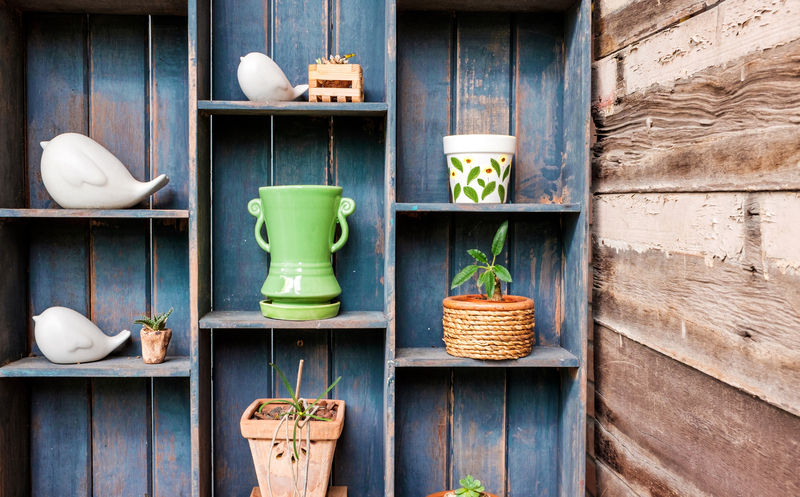Effective Tips for a Plastic-Free Kitchen
Posted on 14/11/2024
In the fight against climate change and pollution, reducing plastic usage in our daily lives has become increasingly vital. The kitchen, often filled with plastic products and single-use items, is a great place to start making a difference. Transitioning to a plastic-free kitchen is not only an environmentally friendly choice but also beneficial for your health. Here are some effective tips to help you create a plastic-free kitchen.
Assess Your Current Plastic Usage
The first step towards a plastic-free kitchen is understanding how much plastic you're currently using. Conduct a thorough audit of your kitchen, listing out all the plastic items you regularly use. This could include storage containers, utensils, cleaning supplies, packaging, and more. Categorize them into reusable and single-use plastics. This exercise will help you identify the primary sources of plastic usage and allow you to target these areas effectively.

Switch to Reusable Storage Options
One of the most significant sources of plastic in any kitchen is storage containers. Begin by replacing plastic containers with more sustainable alternatives like glass, stainless steel, or silicone. These materials are not only eco-friendly but also safer for storing food. Glass containers are particularly useful for leftovers, as they do not retain odors or stains. Stainless steel can be a durable option for long-term storage, while silicone bags work well for freezer storage.
Eliminate Single-Use Plastics
Single-use plastics, such as plastic wrap, ziplock bags, and disposable cutlery, contribute significantly to environmental pollution. To move towards a plastic-free kitchen, replace these items with more sustainable alternatives. For instance, use beeswax wraps or reusable silicone lids instead of plastic wrap. Opt for cloth or mesh produce bags instead of plastic ones when grocery shopping. These small changes can drastically reduce your plastic waste.
Invest in Quality Utensils
Plastic utensils are not only harmful to the environment but can also leach chemicals into your food. Investing in high-quality utensils made of wood, stainless steel, or bamboo can be a game-changer. These materials are not only durable but also add an aesthetic appeal to your kitchen. Consider replacing plastic spatulas, ladles, and spoons with wooden or metal counterparts. This switch will help you reduce plastic waste significantly.
Incorporate Sustainable Cleaning Practices
Cleaning supplies are another area where plastics are prevalent. Switch to natural cleaning products that come in glass or metal bottles. Better still, make your own cleaning solutions using ingredients like vinegar, baking soda, and essential oils. For scrubbers and sponges, opt for biodegradable options made from natural fibers like coconut husks or cellulose. These changes will not only reduce your plastic consumption but also minimize exposure to harmful chemicals.
Buy in Bulk and Bring Your Own Containers
One of the most effective ways to minimize plastic packaging is to buy in bulk. Many stores offer bulk sections where you can purchase grains, nuts, spices, and other staples. Bring your own containers to these stores to avoid using the plastic bags provided. Mason jars, cloth bags, or stainless steel containers work well for this purpose. Buying in bulk not only reduces plastic waste but is also cost-effective in the long run.
Be Mindful of Product Packaging
When shopping for groceries, pay attention to the packaging. Choose products that come in glass jars, metal tins, or cardboard boxes instead of plastic packaging. If you have access to a farmers' market, try to buy your produce there as it often comes with less packaging. Supporting brands that prioritize sustainable packaging can also make a significant impact. Some companies even offer products in compostable or biodegradable packaging.
DIY Food Preparation
Preparing your food from scratch can drastically reduce your reliance on plastic-packaged convenience foods. Items like bread, yogurt, and snacks can be made at home, eliminating the need for plastic packaging. Moreover, cooking from scratch gives you control over ingredients, making your meals healthier and more nutritious. Invest in a few good cookbooks or explore online resources to find recipes that suit your lifestyle.
Compost Food Waste
Proper waste management is crucial in a plastic-free kitchen. Instead of using plastic garbage bags, consider composting your food waste. Composting not only reduces waste but also provides rich fertilizer for your garden. Use compost bins or piles to decompose organic material properly. If composting at home is not feasible, check for local composting programs or community gardens that accept food scraps.

Educate and Involve Family Members
Creating a plastic-free kitchen requires a collective effort. Educate your family members about the importance of reducing plastic usage and involve them in the transition. Assign tasks like grocery shopping or meal prep to encourage participation. The more informed and engaged everyone is, the easier it will be to maintain a plastic-free kitchen in the long run.
Conclusion
Transitioning to a plastic-free kitchen is a gradual process that requires commitment and effort. However, the environmental and health benefits make it well worth the endeavor. By assessing your current plastic usage, switching to reusable options, eliminating single-use plastics, and incorporating sustainable practices, you can create a kitchen that is both eco-friendly and functional. Remember, every small change counts, and collectively, we can make a significant impact on reducing plastic pollution.






